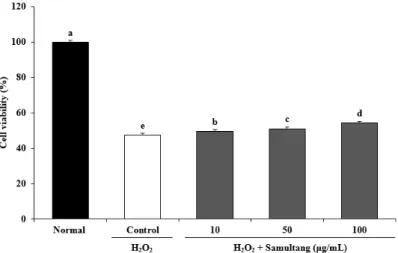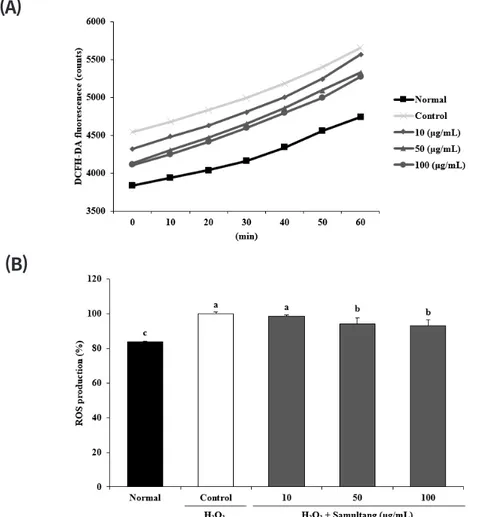This is an Open Access article distributed under the terms of the Creative Commons Attribution Non-Commercial License (http: //creativecommons.org/licenses/by- nc/4.0/) which permits unrestricted non-commercial use, distribution, and reproduction in any medium, provided the original work is properly cited.
Copyright: © 2019 Korean Journal of Agricultural Science
https://doi.org/10.7744/kjoas.20190021
FOOD & CHEMISTRY
Protective effect of Samultang and its four herbal plants against reactive oxygen species in vitro and cellular system
Mi Na Nam
1, Ah Young Lee
2, Seung Mi Sin
3, Young-Min Goo
3, Eun Ju Cho
1,*1
Department of Food Science and Nutrition, Pusan National University, Busan 46241, Korea
2
Department of Food Science, Gyeongnam National University of Science and Technology, Jinju 52725, Korea
3
Gyeongnam Oriental Anti-aging Institute, Sancheong 52215, Korea
*



